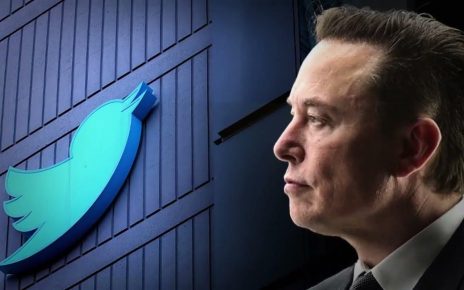Introduction to the EU-Apple Conflict
The landscape of technology is ever-changing, and at the heart of a fierce debate lies an intriguing conflict between the European Union and Apple. As these two giants lock horns, questions arise about market practices, consumer rights, and what it means for users within the iOS ecosystem. While Apple’s sleek devices have captured hearts worldwide, they may now face scrutiny like never before. The tensions are escalating—could this be a pivotal moment that reshapes how we interact with our beloved apps? Buckle up as we dive into the complexities of this unfolding saga.
The Accusations Against Apple
Apple is facing scrutiny from the European Union over its App Store policies. Critics argue that the company maintains an unfair monopoly on app distribution. This control allegedly stifles competition and innovation among developers.
Developers have voiced concerns about high commission fees, often reaching 30%. Many believe this fee structure limits their ability to thrive in a competitive marketplace. They feel trapped within Apple’s ecosystem, unable to reach users without adhering to strict guidelines.
Moreover, accusations highlight that Apple restricts alternative payment methods. By enforcing its own purchasing system, critics contend that Apple hampers consumer choice. These tensions raise questions about fairness and transparency for both developers and users alike.
The EU’s ongoing investigation seeks to address these issues head-on while questioning whether Apple’s practices align with modern digital market standards.
Apple’s Response and Defense
Apple has been vocal about its stance regarding the EU’s accusations. The tech giant emphasizes its commitment to user privacy and security. They argue that their App Store policies are designed to protect users from malware and other threats.
In response to the claims, Apple insists that it fosters innovation through a controlled ecosystem. They believe this model benefits developers by offering tools and resources that enhance app quality.
Moreover, Apple points out how much they’ve invested in Europe. From job creation to supporting local businesses, they view themselves as a partner rather than an adversary of European regulators.
The company also highlights its efforts toward transparency. Regular updates on data practices aim to reassure users about their rights within the iOS ecosystem. This defensive strategy illustrates Apple’s dedication while navigating complex regulatory landscapes.
Potential Impacts on iOS Ecosystem and Users
The tensions between the EU and Apple could reshape the iOS ecosystem in significant ways. If Apple is compelled to open its platform, developers might gain more flexibility. This change could lead to a surge of innovative apps tailored for diverse user needs.
On the flip side, opening up may also introduce risks related to security and privacy. Users accustomed to Apple’s tightly controlled environment might find themselves exposed to vulnerabilities.
For existing users, this shift could mean access to alternative app stores and payment options. While competition can drive prices down, it may also complicate their overall experience with increased choices.
Additionally, smaller developers might finally have a fighting chance against larger companies that dominate app distribution today. The balance between innovation and safety will remain crucial as these changes unfold within the iOS landscape.
Similar Cases in the Past
The conflict between regulatory bodies and tech giants is not new. History shows us several instances where companies faced scrutiny from governments.
One notable case involved Microsoft in the late 1990s. The U.
S. government accused the software giant of monopolistic practices, particularly concerning its Windows operating system. This led to an extensive antitrust lawsuit that ultimately reshaped how tech companies operate today.
Another example is Google, which has been under fire for its advertising practices and dominance in search engines. The European Commission slapped hefty fines on Google, pushing for changes in how it manages competition within its ecosystem.
These precedents illustrate a growing trend of oversight aimed at curbing corporate power while promoting fair competition. As regulators adapt to modern technology landscapes, tensions are likely to persist across various sectors—including the ongoing saga between the EU and Apple over app store policies and data privacy issues.
The Future of the EU-Apple Relationship
The future of the EU-Apple relationship remains uncertain and complex. As both entities navigate their interests, a delicate balance is required.
Regulatory changes are likely. The European Union is pushing for laws that promote competition and ensure consumer rights. This could reshape how Apple operates in Europe.
Apple’s commitment to privacy might clash with new regulations aimed at transparency. Users may feel caught in the middle as policies evolve.
Innovation may face challenges too. If forced to open its ecosystem further, Apple could struggle to maintain the seamless experience it prides itself on.
Negotiations will be crucial moving forward. Stakeholders from both sides must engage constructively to foster an environment where technology thrives while protecting user interests.
As these dynamics unfold, users will watch closely, weighing potential benefits against possible drawbacks in their everyday tech experiences.
Conclusion
The ongoing tensions between the EU and Apple highlight significant issues surrounding market competition, consumer rights, and digital privacy. As accusations against Apple mount regarding its restrictive practices within the iOS ecosystem, it becomes evident that this conflict could reshape how tech giants operate in Europe.
Apple’s defense emphasizes its commitment to user security and a seamless experience. However, critics argue that such measures may stifle innovation and limit choices for consumers. The implications of these developments extend beyond just legal battles; they can influence app availability, pricing structures, and ultimately the overall functionality of devices used by millions across Europe.
Similar cases from the past demonstrate that regulatory scrutiny can lead to substantial changes in business practices. Companies often find themselves adjusting strategies after facing pressure from governing bodies. This scenario raises questions about whether Apple will adapt or continue resisting change as pressures mount.
Looking ahead, the relationship between the EU and Apple remains uncertain. Will we see an opening up of the iOS ecosystem? Or will Apple maintain its closed garden approach? The answers lie not just in negotiations but also in how both parties navigate their respective interests while considering users’ needs.
As this story unfolds, all eyes will be on potential agreements or conflicts shaping one of today’s most influential technology landscapes.



